How We Chose the Best Liveaboard Catamaran
As an Amazon Associate, we earn from qualifying purchases. We also earn from other affiliate websites. See our full disclaimer.
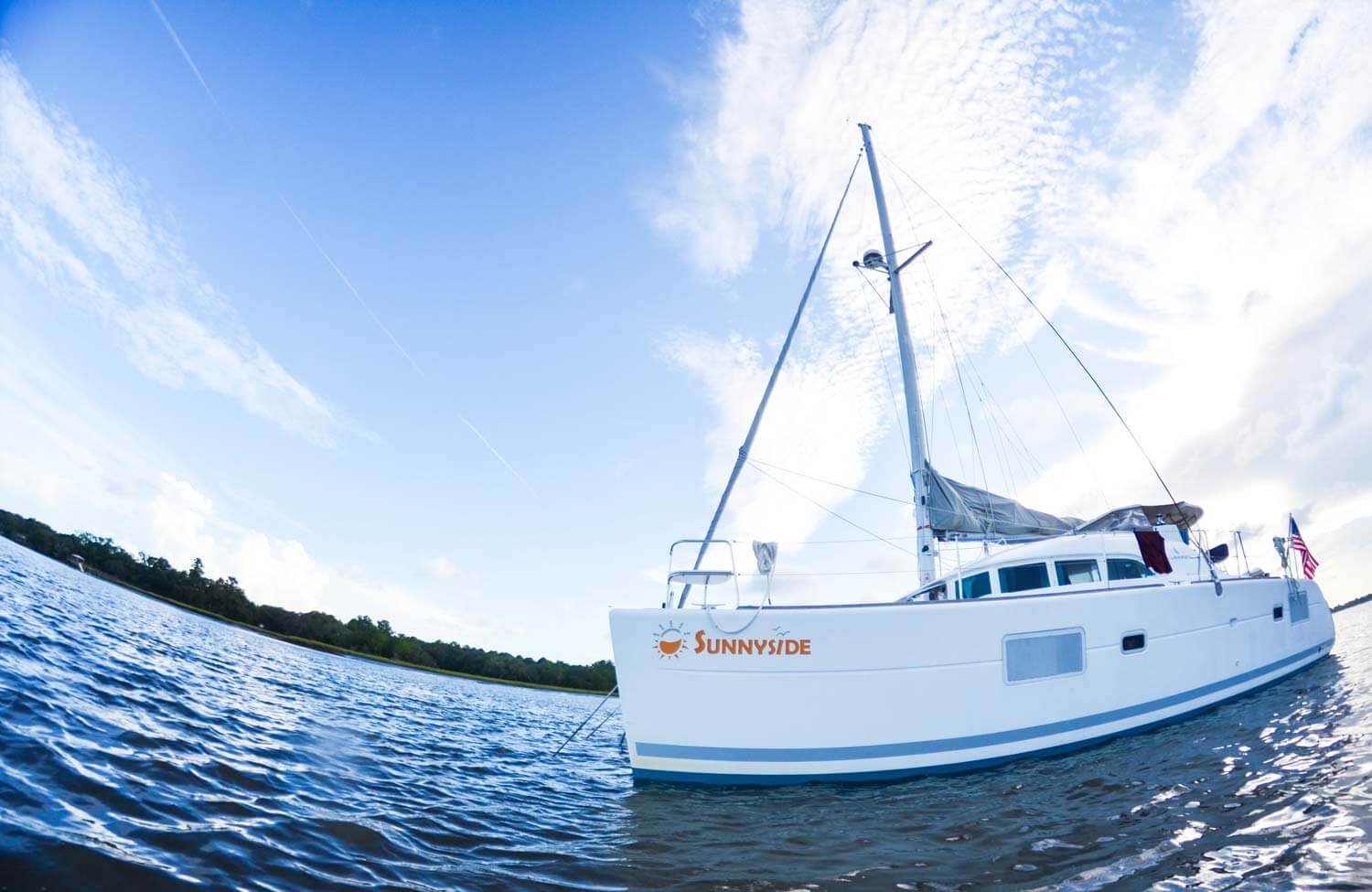
It was eye-opening when we began our preparation to shop for a cruising catamaran. We didn’t have many clues as to what to look for. We did know that we needed to research (a lot) and rely on others’ knowledge and experience.
We listened and learned throughout our six-month process of buying a sailing catamaran. We also figured out which advice to take to heart.
Here are the five important things to look for and take into account when choosing the best liveaboard catamaran and the perfect boat for you and your crew.
1. What Size Catamaran Do You Need?
The most common advice we found was to buy the smallest sailing cat we could comfortably live aboard.
Here are a few tips for deciding on your catamaran’s length.
- The smaller the boat, the less boat to maneuver, dock and maintain. As new boat owners, this didn’t go unnoticed. We would pay for any gluttonous purchase with more sweat, tears, and cash later.
- The layout of the saloon and galley can play a part in how big a boat feels. Getting inside different catamarans, whether at a boat show or by other means, will give you more knowledge of your preferred interior space layout.
- Sailing on a catamaran generally becomes more comfortable on larger models. If you are planning to do a lot of offshore sailing, things like bridge deck clearance, beam-to-length ratio, and other performance indicators will become drastically more of a priority when purchasing your boat.
- Another significant factor for us was the ceiling height of the boat. At 6’3, Ross could step on a boat and know almost immediately if it was a contender. (Ceiling height can vary in different models and isn’t always correlated with the length or size of the catamaran.)
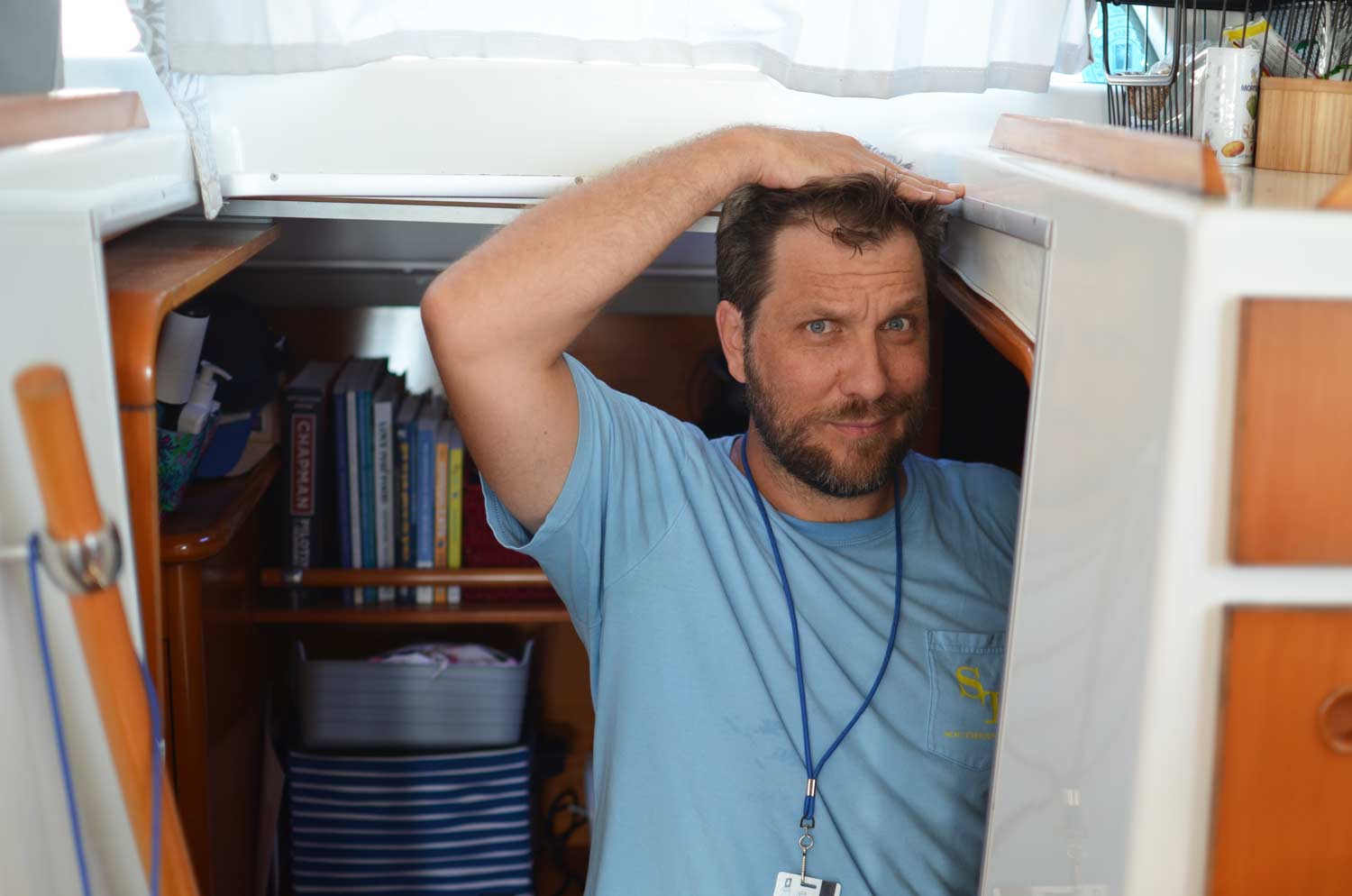
Ross still has to watch his head, but he’s getting better at subconsciously ducking.
WHAT WORKED FOR US: As a two-human, one-feline family that was planning to do mostly coastal cruising, the ideal catamaran length for us turned out to be in the 37-40 foot range for most production catamaran lines.
2. The Fixer-Upper Catamaran Sailboat
Learning the ins and outs of our first boat, including learning to sail a catamaran, was already overwhelming.
Considering also needing to fix many major working parts made my eyes cross. We would have our hands full even with almost everything in working order.
Replacing rigging right away? No, thank you.
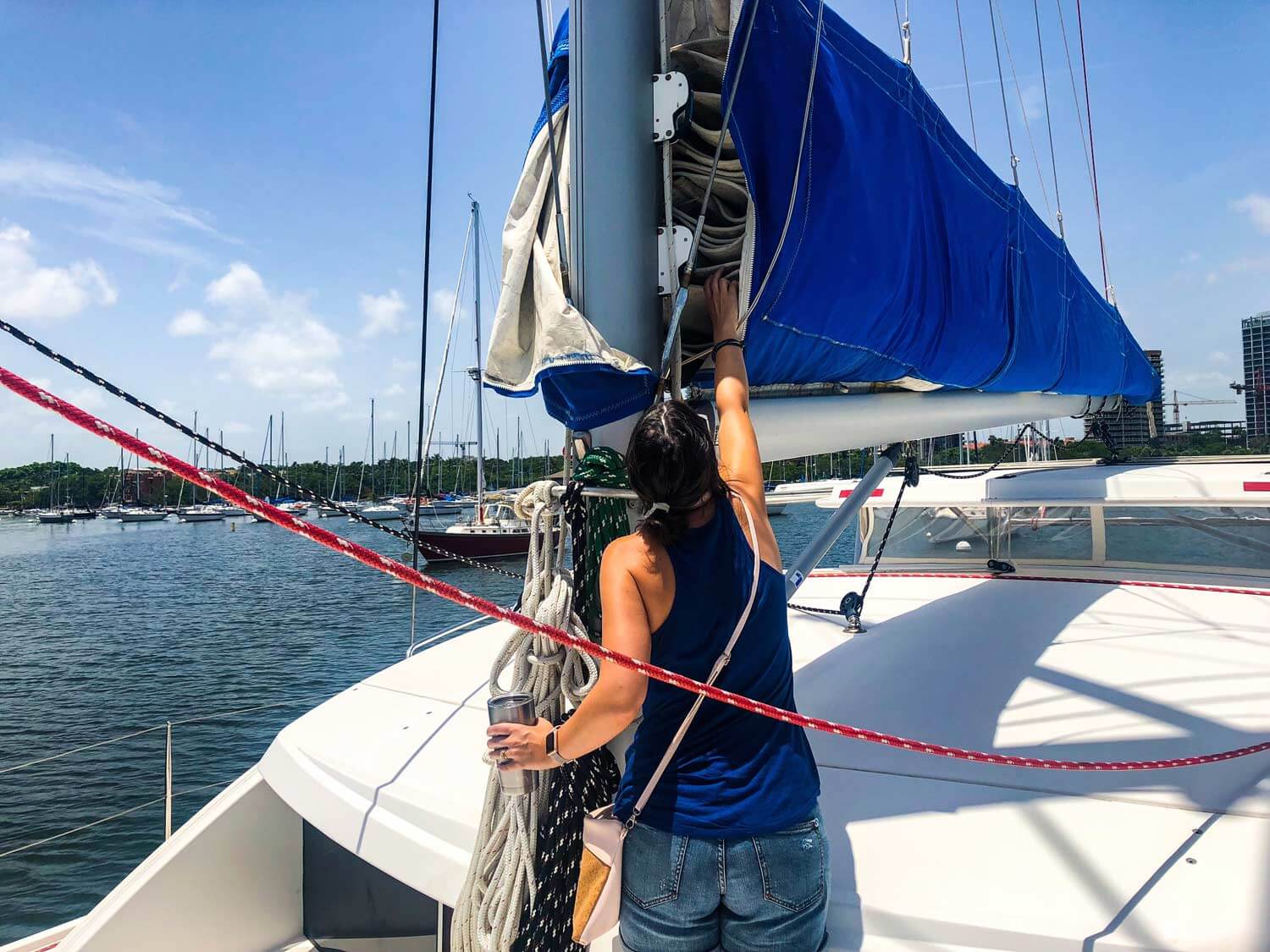
We found other experienced sailors agreed, at least for our first boat.
Yes, we’d miss out on the attractive cost savings. But we would be able to spend our precious time getting to know the boat, its systems, and this new lifestyle.
NOTE: There are a lot of opinions about purchasing a charter boat (a boat that has been retired from the charter market). These can be good sailboats, and the average price is often lower than a boat that hasn’t been chartered. Just be aware there could be additional wear and tear, and of course, hire a reputable surveyor.
WHAT WORKED FOR US: There will always be things that need to be fixed when you buy a boat, even a new catamaran. We found a pre-owned catamaran that needed minor repairs but was overall ready to set sail.
3. What Systems Do You Need Onboard?
At first, we found ourselves looking for a catamaran with all the systems (we thought) we needed. Insert watermaker, generator, air conditioning, etc., here.
There is a wide range of what is said you “need” on a boat. Every sailor is different. Some people live without refrigeration; some consider a washing machine essential.
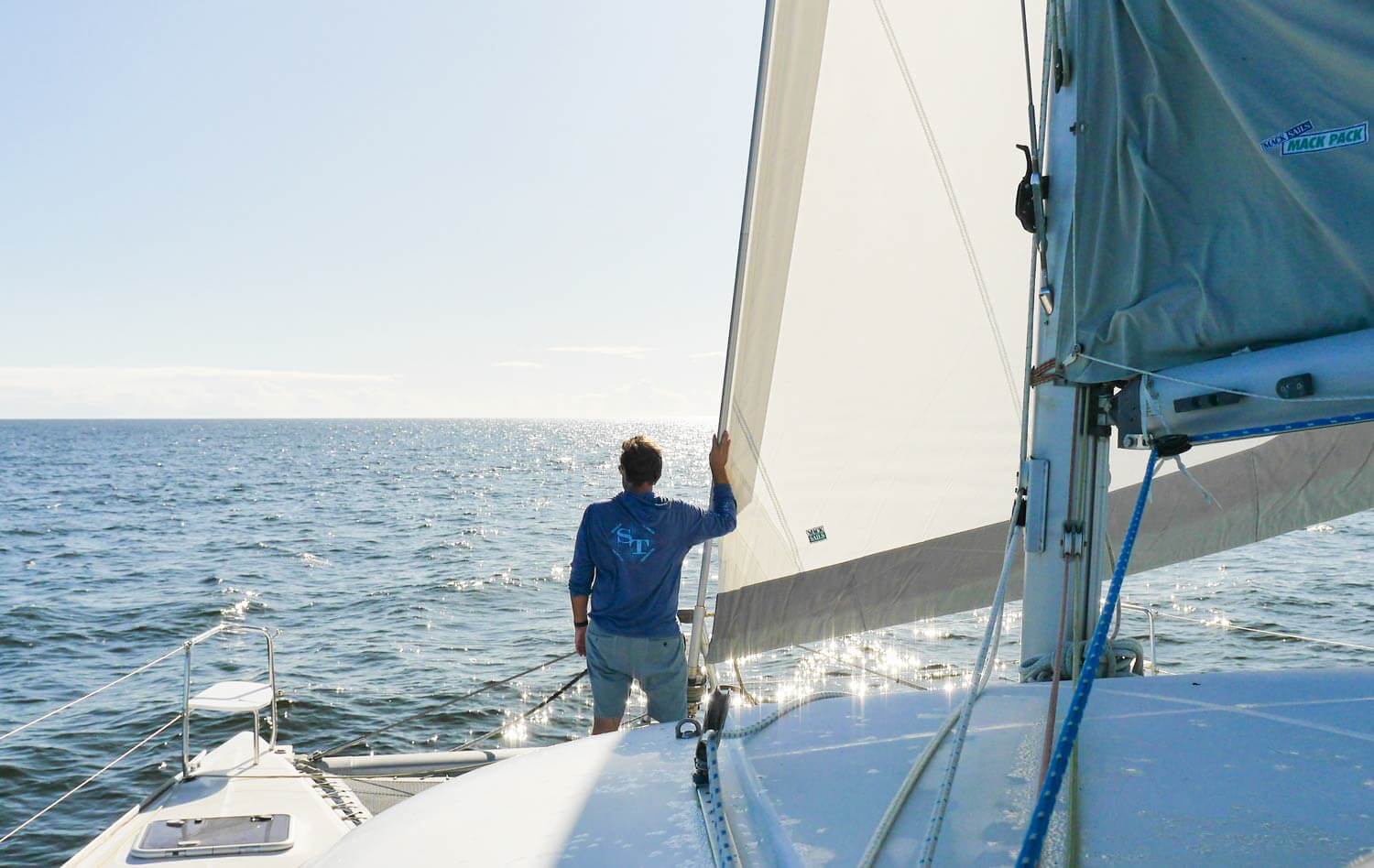
The only way to know what sacrifices and trade-offs you’re willing to make is to live the sailing life. Cruise how you plan to in the future, and see what works. Then you can start answering questions.
How frugal do you want to be with water? How conservative with energy? How do you want to handle the heat?
Changing your mindset to buy a boat capable of living off the grid but without all the additional comforts can be a good idea.
When you start cruising more remotely, you can decide if you want the convenience of a watermaker, more solar, or a generator for backup power.
Sailing legends Lin and Larry Pardey are famous for their sailing quote, “Go small, go simple, go now.” And although I don’t believe they were referring to a 40-foot cat, I still think we can take away a reminder to keep things simple and get on the water – especially newbie sailors.
WHAT WORKED FOR US: We landed on the most important system to us – solar, and went from there. We found that by getting started cruising, we could live without many of the conveniences we thought we needed. In the meantime, we were able to enjoy not having an overabundance of systems to learn and maintain.
4. Owners’ Version Catamaran
Whether you choose a charter version or an owners’ version catamaran will have a big impact on the boat’s cabin layout and purchase price.
What is an owners’ version catamaran? This desirable catamaran layout has three cabins instead of four cabins (referred to as a charter version because this layout is the standard for charter companies). Meaning there is a spacious bathroom (head) in the place of the fourth cabin in the owners’ hull.
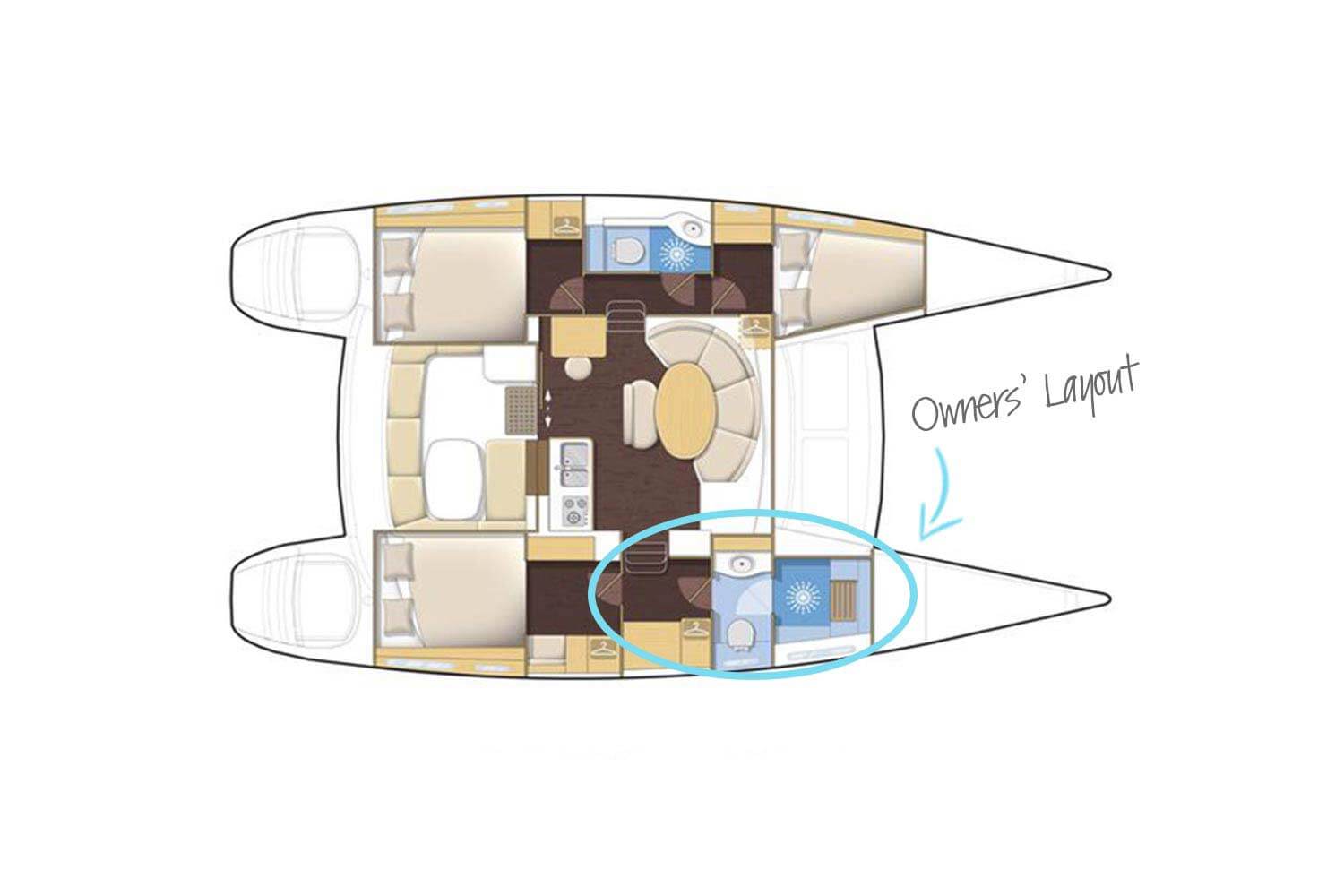
These sailing catamarans are a little scarce and come at a premium, but it’s one a lot of folks are willing to pay an additional cost to have, including us.
In one hull, the forward cabin is replaced by an expanded bathroom. This allows for a more open layout and storage space. On catamarans under 40 feet, the 2-cabin, 1-bath hulls can be especially tight.
WHAT WORKED FOR US: This was our most inflexible condition. If we were going to live in this tiny floating home, we wanted to maximize the hull’s limited living space better. A larger bathroom, a more open layout in the hull, and more storage space would let us do that.
Also, I can’t imagine the fiasco of Ross trying to shower in a wet bath where you shower with the toilet. I would most likely end up living with a very smelly guy! Lucky for my nose, with a little patience and persistence, we were able to find our three-cabin home.
5. Choosing a Catamaran Manufacturer
One of the big questions I find future cruisers have is, ‘What is the best cruising catamaran?’ There are a ton of opinions out there about the right catamaran to purchase. Remember, the answer will depend on your cruising style and the price range of your budget.
How much offshore cruising do you want to do? Will you be sailing single-handed? Balancing your needs and budget will be a big part of the process.
Production Sailing Catamarans
Many people asked if we were looking for a Lagoon catamaran when we were shopping.
The truth is, we didn’t know what we wanted, so we looked at as many boats as we could. From the popular South African-built Leopard Catamarans to the smaller U.S.-manufactured Gemini, we looked at various makes, models, and years of catamarans on the used market.
In the end, we found purchasing a highly-produced boat would make our lives easier as new sailors.
Catamaran sailboats are not cars. They are made on demand. For many models, 100 (or fewer) boats might be manufactured.
However, catamaran manufacturers, such as Lagoon, Leopard, and Fountaine Pajot, may design and produce quite a few more.
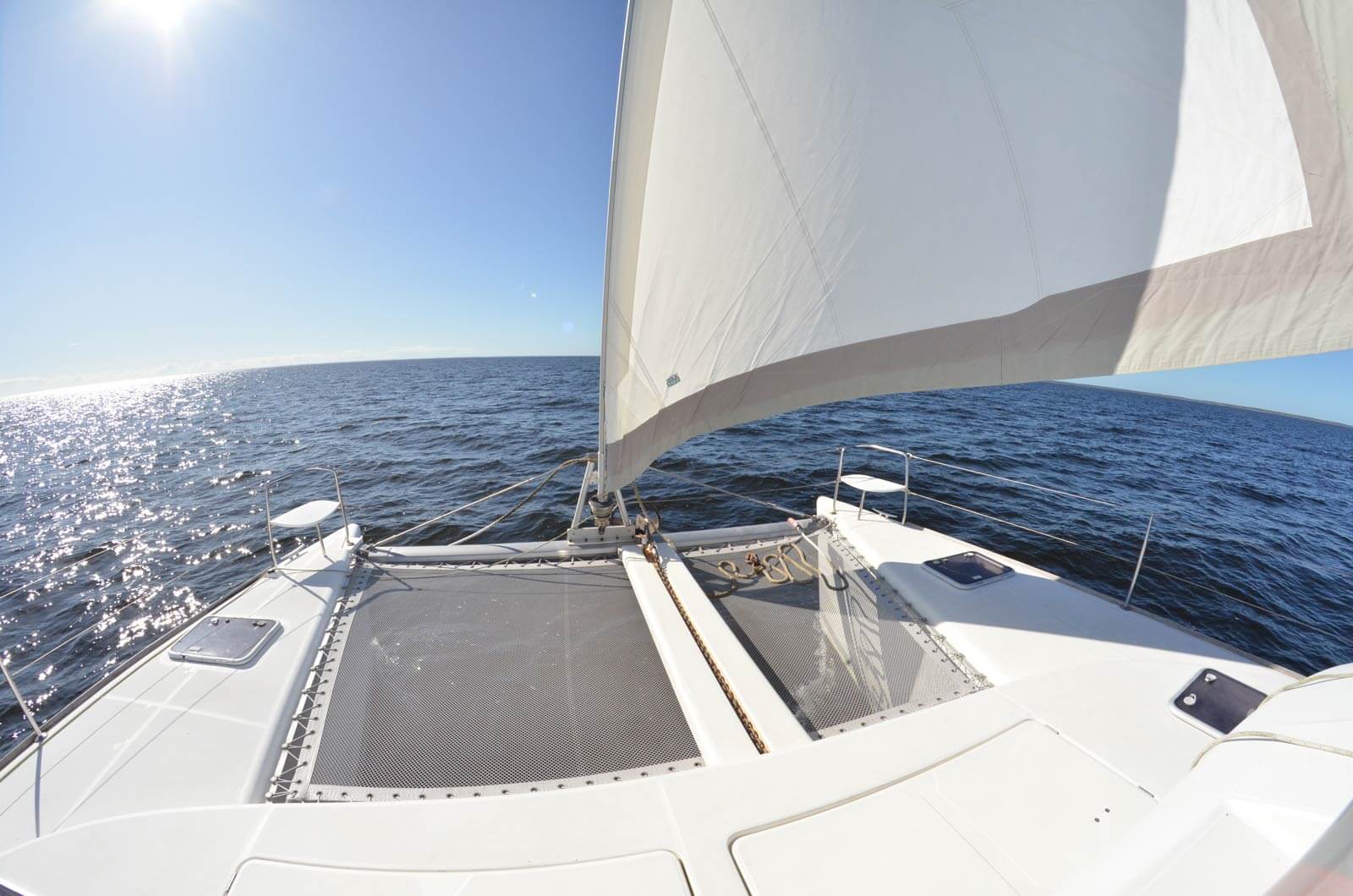
Our Lagoon 380 is hull number 322, which was a lot when it was built in 2005. I recently saw in a Facebook group that the tally is creeping up to 900.
Whoa, that’s a lot of boats. Or, as I like to call them, my newfound sailing friends whom we can inquire about how to fix this or get to that.
From forums and Facebook groups to people we meet, someone out there has already done what we are trying to do on our model boat.
WHAT WORKED FOR US: For us rookies, access to more information and the comfort of knowing a certain model production boat had been tested could save us oodles of time and money. Ultimately, the Lagoon 380 layout and availability of a boat that ticked all our other boxes made this the right choice for us.
Buying the Best Liveaboard Catamaran
Buying a catamaran came with many hard decisions because, let’s face it, it’s a lot of money for something you keep putting money into.
Things like how you want to cruise, how long you want to cruise, and other circumstances will help you decide what catamaran is best for you.
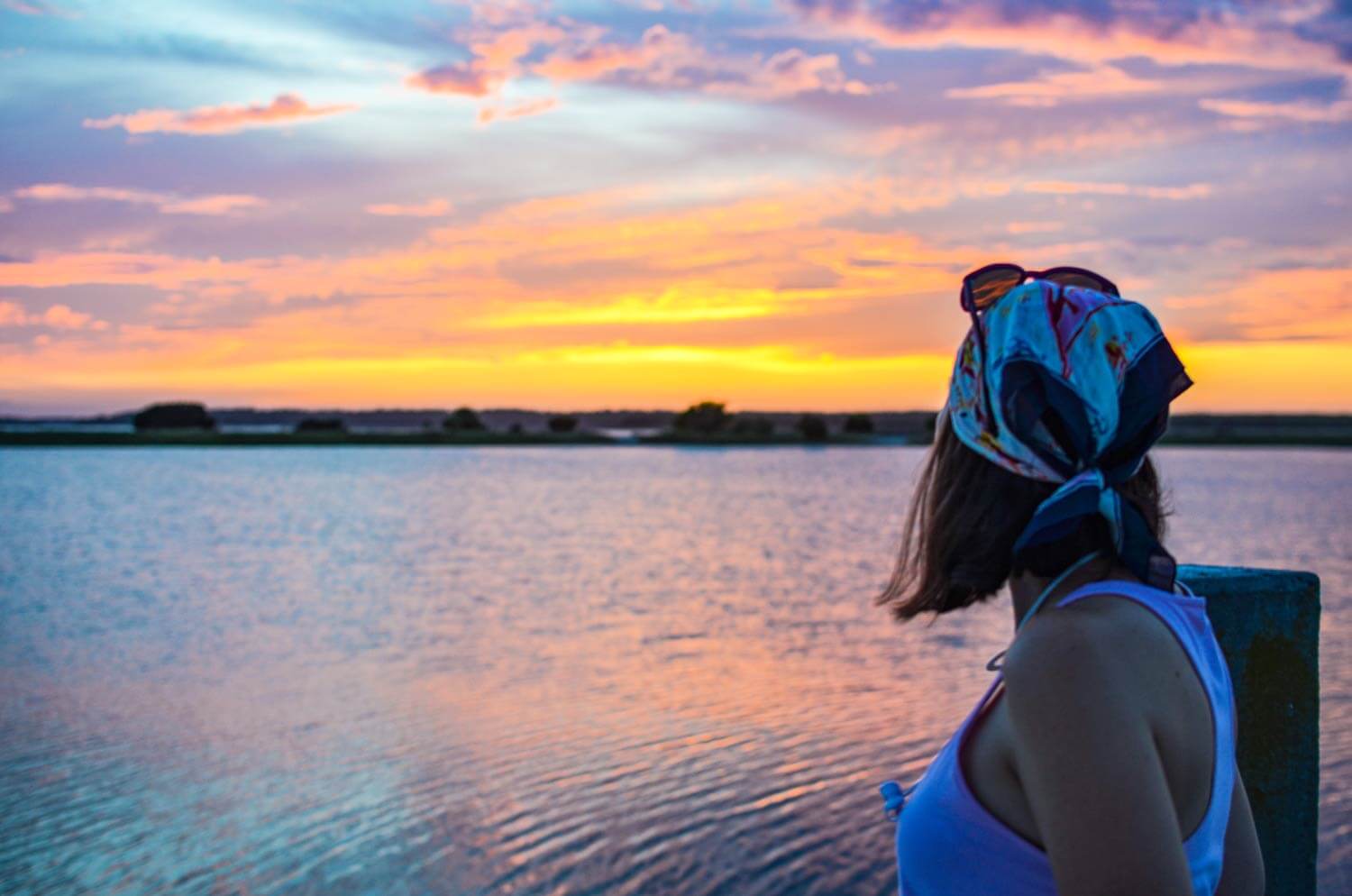
Ultimately, given our knowledge, personal preferences, market climate, and many other factors, we sought to make the most informed decision possible.
Our Lagoon might not be the biggest or fastest boat out there. But so far, Sunnyside has been the right boat for us. She got us out cruising and living this sailing lifestyle, which makes her the best sailboat we could ask for.
YOU MIGHT ALSO LIKE: Our post featuring 5 Important Tips to Remember When Buying a Catamaran.
For more about our Lagoon 380 catamaran, check out the link below.
Want more tips on how to start cruising on a boat?
View our guide to get a real look at life on a boat, including the cost of cruising and priceless tips for learning how to live aboard.
Like this post? Save it on Pinterest for later.
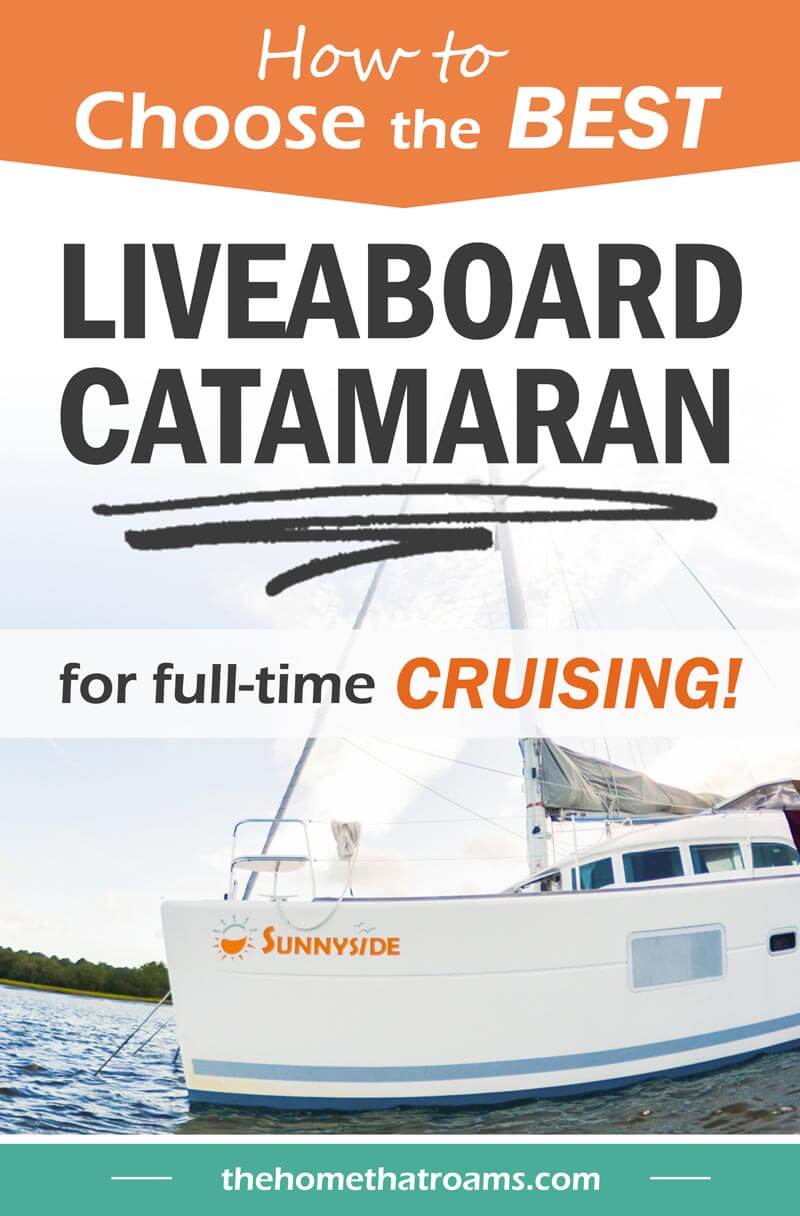

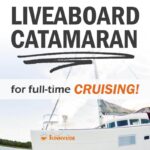

That’s really nice post. I appreciate your skills, Thanks for sharing.
Thanks so much!